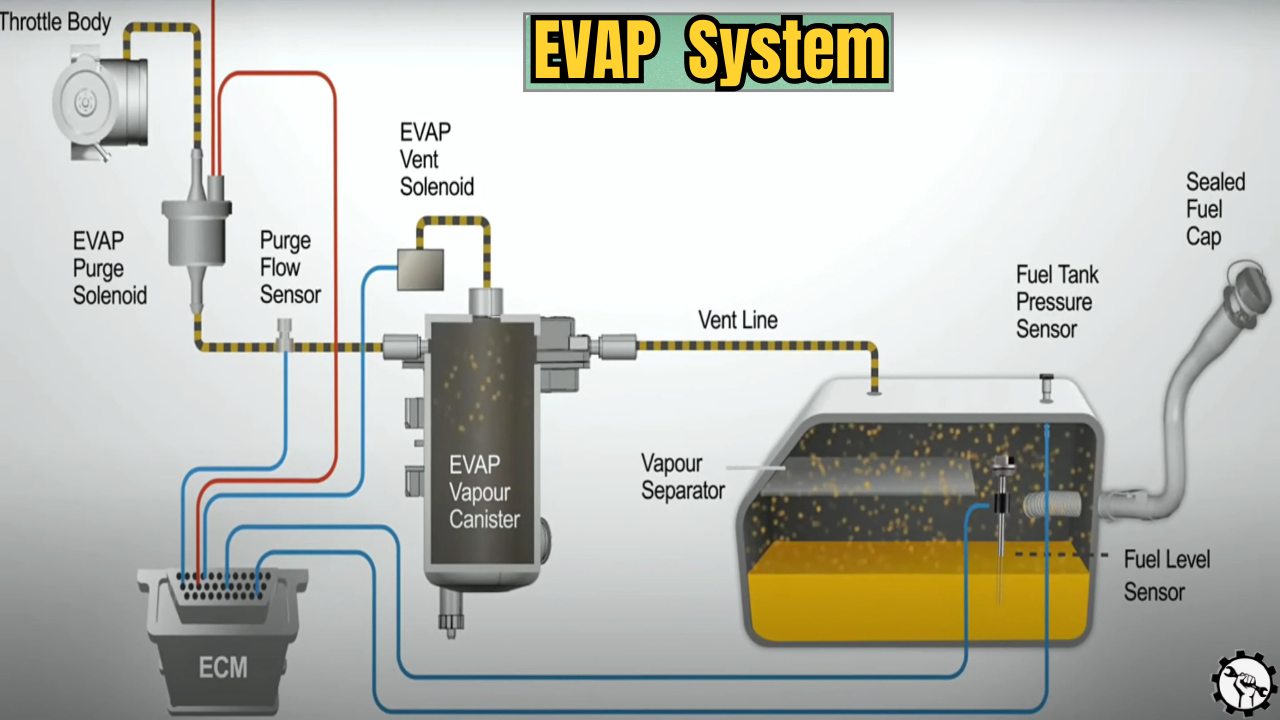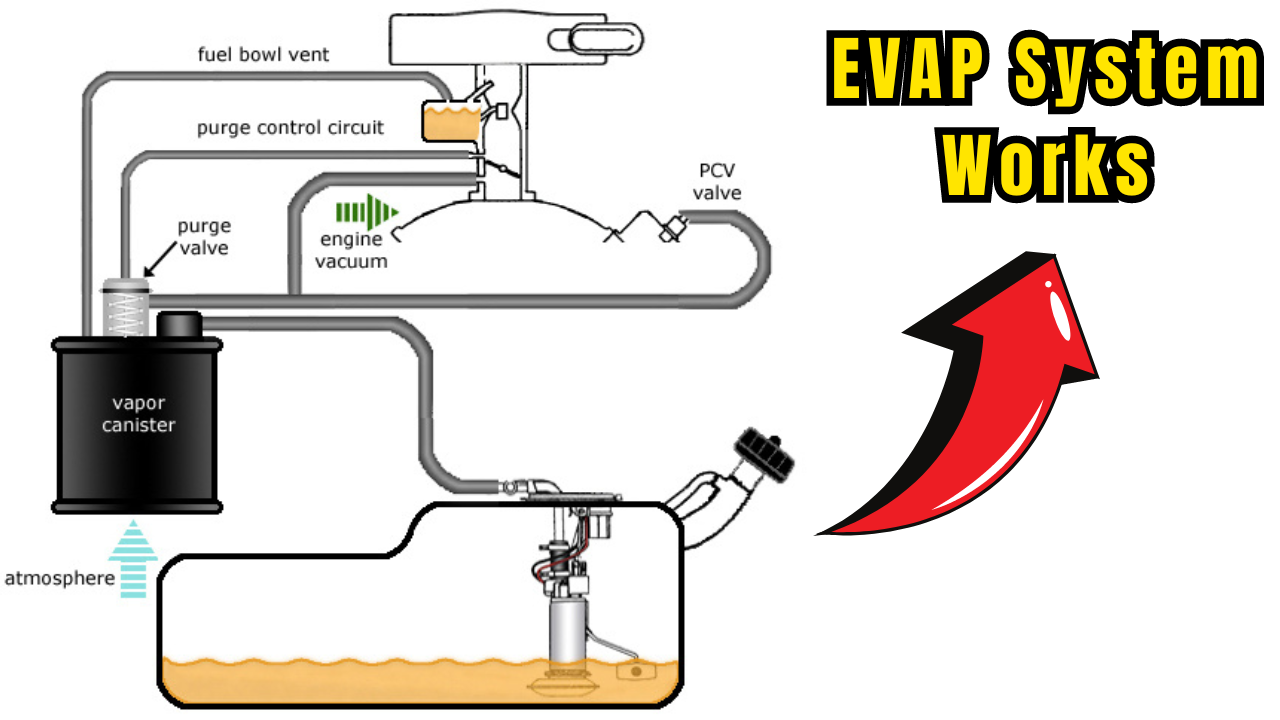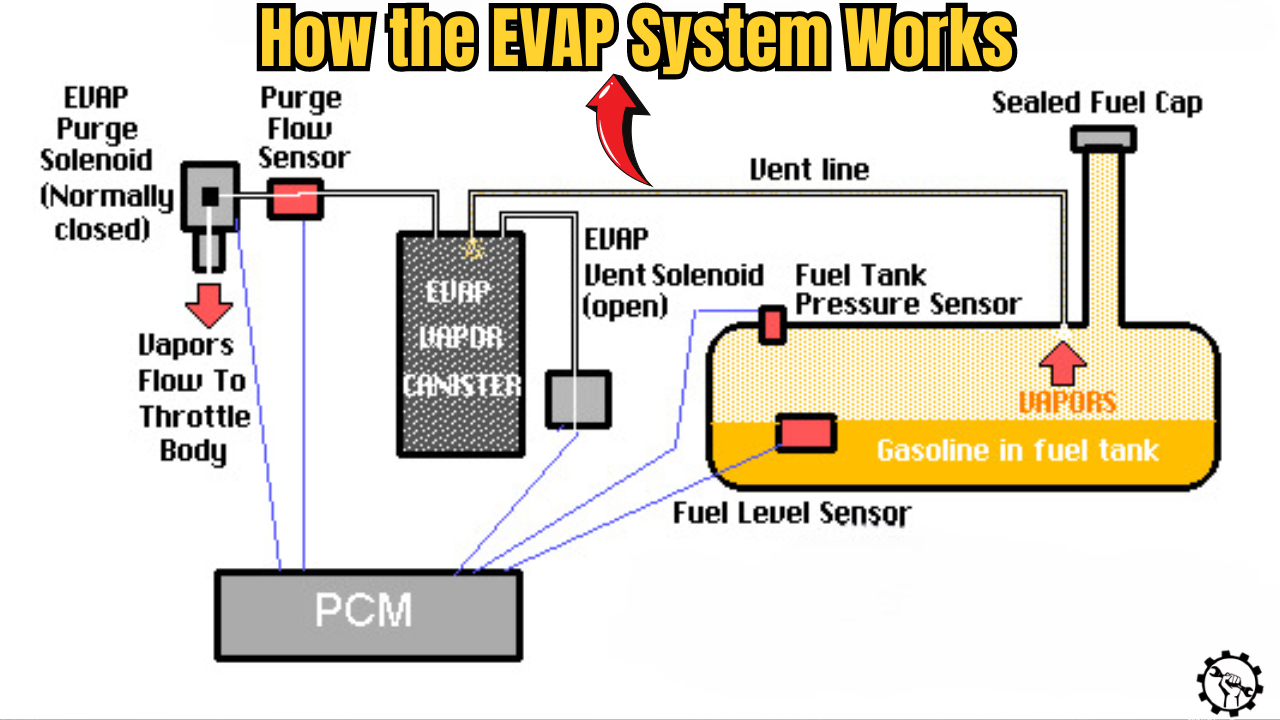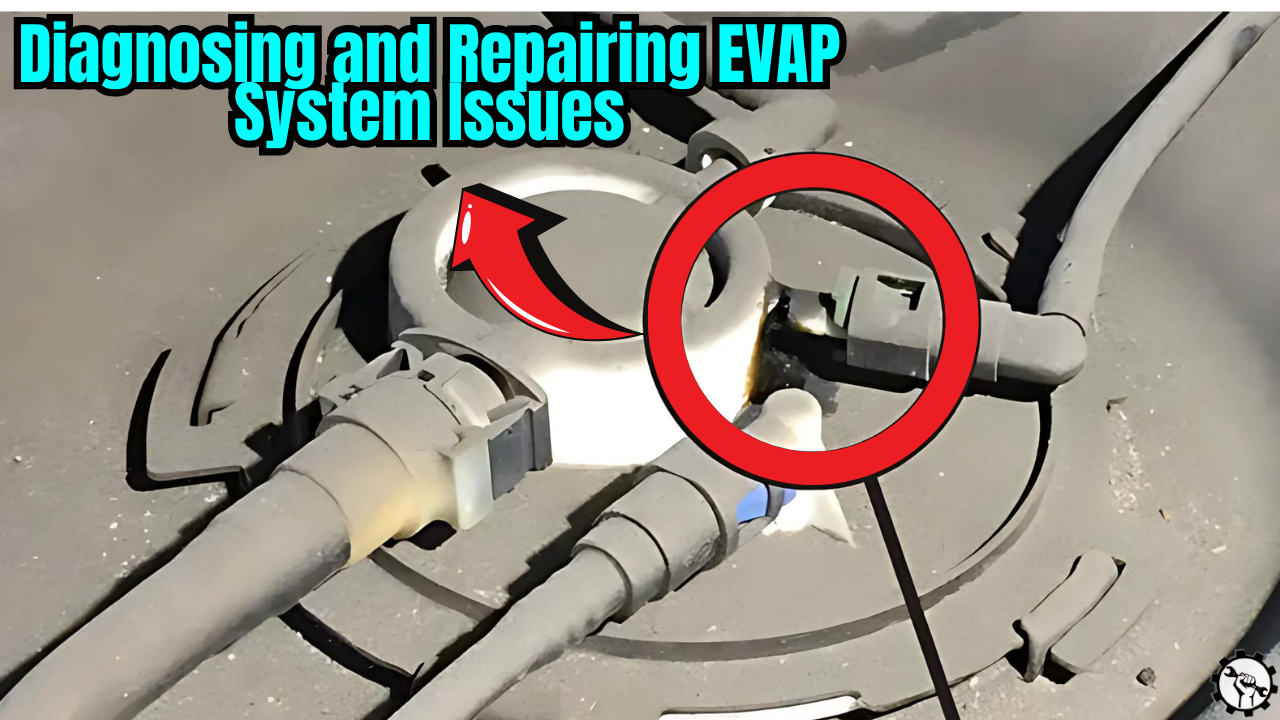The Evaporative Emission Control System (EVAP) plays a critical role to reduce the environmental impact of modern car’s fuel vapors. By preventing these vapors from escaping into the atmosphere, the EVAP system not only helps to curb pollution but also ensures that your vehicle meets stringent emissions standards. Let’s learn the key components of the EVAP system, how it works, and what happens when it malfunctions.
What is the EVAP System?
The EVAP system is an essential part of a vehicle’s emission control strategy. Its primary purpose is to capture and store fuel vapors that are generated in the fuel tank, preventing them from being released into the atmosphere.
These vapors, which contain hydrocarbons, are a significant contributor to air pollution if not properly managed. The system is designed to temporarily hold these vapors in a vapor canister and then safely purge them into the engine for combustion when conditions are optimal.
Most vehicles manufactured after 1996 are equipped with an enhanced EVAP system, which includes additional features such as self-diagnostic capabilities. These systems are able to detect leaks and malfunctions and will trigger the check engine light if a problem is found.

Primary Components of the EVAP System
It’s inevitable that understanding how the EVAP system works begins with understanding its key components:
Vapor Canister: Often referred to as a charcoal canister, this component is where fuel vapors from the gas tank are stored. The canister contains activated charcoal, which absorbs and holds the vapors until they can be purged into the engine.
Purge Valve (Canister Purge Solenoid): This is an electronically controlled valve that opens to allow the stored fuel vapors to be drawn from the vapor canister into the engine’s intake manifold. The purge valve is controlled by the Powertrain Control Module (PCM), which determines the optimal time for purging based on various engine operating conditions.
Canister Vent Valve: This valve allows fresh air to enter the vapor canister, which helps in the purging process. It also seals the system during self-diagnostic tests to ensure no leaks are present.
Gas Cap: Often overlooked, the gas cap is a crucial part of the EVAP system. It ensures a proper seal on the fuel tank, preventing fuel vapors from escaping. A loose or faulty gas cap is one of the most common causes of EVAP-related issues. Besides, it’s dangerous to leave leaked gas cap.
Fuel Tank Pressure Sensor: This sensor monitors the pressure within the fuel tank. It helps the PCM detect any leaks or other malfunctions in the EVAP system by measuring changes in pressure.
EVAP System Lines and Hoses: These connect the various components of the EVAP system and are potential points of failure, especially as the vehicle ages.
How the EVAP System Works
The operation of the EVAP system can be broken down into three main processes: storing fuel vapors, purging fuel vapors, and monitoring for leaks.

Storing Fuel Vapors
When your vehicle is off, fuel in the tank begins to evaporate, producing vapors. These vapors travel through the vent lines to the vapor canister, where they are absorbed by the activated charcoal. The canister is designed to store these vapors until the engine is running, and conditions are right for them to be purged.
Purging Fuel Vapors
When the engine is running, the PCM determines the right time to purge the stored vapors from the vapor canister into the engine. It does this by opening the purge valve, which allows the engine’s intake vacuum to draw the vapors into the combustion chamber.
The fresh air that enters through the canister vent valve helps in this process, ensuring that the vapors are effectively burned in the engine along with the regular air-fuel mixture.
Monitoring for Leaks
Enhanced EVAP systems include self-diagnostic tests to ensure the system is operating correctly. One common test is the large leak test, where the PCM closes the canister vent valve and opens the purge valve to create a vacuum in the system.
The fuel tank pressure sensor then measures the vacuum level. If the vacuum is lower than expected, it indicates a leak somewhere in the system, and the PCM will store a diagnostic trouble code (DTC) and trigger the check engine light.

Common EVAP System Issues
Despite its importance, the EVAP system can develop issues over time, often leading to the check engine light being activated. Some of the most common problems that you can notice include but aren’t limited to:
Leaking Gas Cap
As mentioned earlier, a loose or faulty gas cap is a common cause of EVAP system leaks. If the gas cap doesn’t seal properly, fuel vapors can escape, triggering the check engine light.
Faulty Purge Valve
If the purge valve becomes stuck open or closed, it can cause a range of issues. A stuck-open valve can lead to a rough idle or difficulty starting the engine, while a stuck-closed valve can prevent the system from purging vapors properly, leading to an increase in emissions.
Damaged or Disconnected Hoses
The hoses that connect the various components of the EVAP system can become cracked or disconnected over time, ECU leading to leaks that trigger diagnostic trouble codes.
Malfunctioning Canister Vent Valve
If the canister vent valve fails, it can cause the EVAP system to remain sealed when it should be open, or vice versa. This can prevent the system from purging correctly or cause it to leak, leading to increased emissions and potential drivability issues.
Bad Fuel Tank Pressure Sensor
A malfunctioning pressure sensor can give the PCM incorrect readings, leading to false diagnostic trouble codes or an inability to detect actual leaks in the system.
Diagnosing and Repairing EVAP System Issues
Diagnosing problems with the EVAP system often requires specialized tools, such as a smoke machine, which can be used to detect leaks by filling the system with smoke and observing where it escapes.

At this point, a scan tool is necessary to retrieve diagnostic trouble codes from the PCM, which can provide clues about the definition and the nature of the problem.
In many cases, repairing an EVAP system issue can be as simple as tightening or replacing the gas cap. However, more complex problems, such as a faulty purge valve or vent valve, it may require professional diagnosis and repair.
It’s also important to note that while it may be safe to drive with a minor EVAP leak, doing so is harmful to the environment and could prevent your vehicle from passing emissions tests.
Verdicts
The EVAP system reduces vehicle emissions by capturing and safely disposing of fuel vapors. Understanding its function and maintaining it regularly can help you avoid issues, ensure emissions compliance, and keep your vehicle environmentally friendly.

As a mechanical engineer, it’s easy for David to explain the functionality of the tool. David test most of the tools before writing a review. its help him to learn something new and suggest the best product for you.





